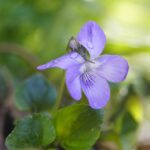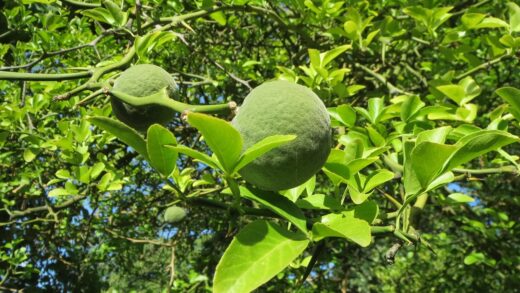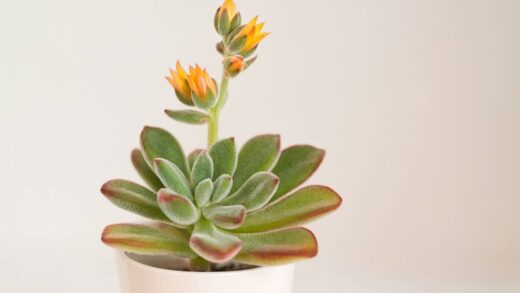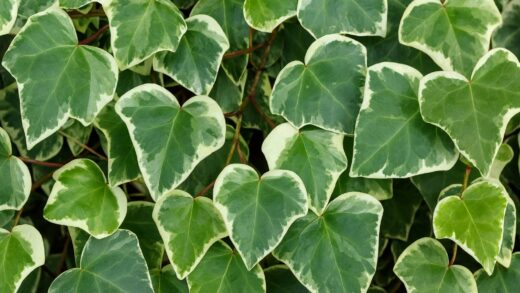The successful cultivation of a Dieffenbachia begins with its initial planting, a process that establishes the foundation for its long-term health and vitality. Choosing the right container and soil mix is paramount, as these elements directly impact root development and the plant’s ability to access water and nutrients. Equally important is the art of propagation, which allows for the creation of new plants from a mature specimen, expanding a collection or sharing this beautiful foliage plant with others. Understanding the precise techniques for both planting and propagation ensures that these processes are not left to chance but are executed with the knowledge required for a successful outcome.
Planting a new Dieffenbachia, whether it is a young plant from a nursery or a newly rooted cutting, requires careful attention to detail to minimize stress and encourage rapid establishment. The process involves more than simply placing the plant in a pot of soil; it is about creating an optimal environment for the root system to thrive from day one. This includes selecting a pot of the appropriate size to prevent overwatering, preparing a well-aerated and fast-draining potting medium, and positioning the plant at the correct depth. A properly planted Dieffenbachia will quickly develop a robust root system, which is essential for supporting its large, lush leaves.
Propagation, on the other hand, is a rewarding horticultural practice that capitalizes on the plant’s natural ability to regenerate. Dieffenbachia is particularly well-suited to several methods of vegetative propagation, most notably through stem cuttings. This method not only allows for the multiplication of the plant but also serves as a practical way to rejuvenate an older, leggy specimen, transforming it into a more compact and attractive plant. Mastering propagation techniques opens up a new dimension of plant care, turning a single plant into a potentially endless supply of new ones.
Whether planting for the first time or propagating a cherished specimen, the principles of proper hygiene and aftercare are universal. Using clean tools and fresh potting mix helps to prevent the introduction and spread of pathogens that can harm vulnerable young plants or cuttings. Following propagation, providing the right conditions—such as adequate warmth, humidity, and indirect light—is crucial for encouraging root development and ensuring the successful transition of the new plantlet into an independent, thriving individual. This initial period of care is a critical investment in the future health and beauty of the plant.
Selecting the right container and soil
The choice of container plays a more significant role in the health of a Dieffenbachia than many realize. The most critical feature of any pot is the presence of drainage holes. Without adequate drainage, water will accumulate at the bottom of the pot, creating an anaerobic environment that deprives the roots of oxygen and inevitably leads to root rot, one of the most common reasons for the demise of this plant. The material of the pot also matters; porous materials like unglazed terracotta allow for better air and moisture exchange through the walls of the pot, helping the soil to dry out more evenly, which is beneficial for Dieffenbachia.
More articles on this topic
The size of the container must be carefully considered relative to the size of the plant’s root ball. A common mistake is to place a small plant in a very large pot, with the assumption that this will give it room to grow. However, a large volume of soil without roots will hold onto moisture for an extended period, significantly increasing the risk of overwatering and root decay. The ideal pot should be only slightly larger than the root mass, typically leaving about 2-3 cm (1 inch) of space between the root ball and the sides of the container. This provides enough room for new root growth without creating a swampy soil environment.
The composition of the potting medium is just as crucial as the container itself. Dieffenbachia requires a soil that can retain some moisture to keep the roots hydrated, but it must also be loose and well-aerated to allow excess water to drain away quickly. A high-quality, peat-based potting mix for houseplants provides a good foundation. To improve its structure and drainage properties, it is highly recommended to amend this base mix with components like perlite, pumice, or coarse orchid bark. A successful recipe might consist of two parts potting mix, one part perlite, and one part orchid bark, creating a chunky, airy medium that the roots will appreciate.
Before planting, it is essential to prepare both the container and the soil. If you are reusing an old pot, scrub it thoroughly with hot, soapy water and disinfect it with a dilute bleach solution to eliminate any lingering pathogens from previous occupants. Moisten the potting mix slightly before use; it should be damp but not soaking wet. Pre-moistening the soil ensures that the root ball is surrounded by a hospitable, lightly hydrated environment from the moment it is planted, which can help reduce the initial shock of transplanting.
The step-by-step planting process
The first step in planting a Dieffenbachia is to carefully remove it from its nursery pot. To do this, gently tip the pot on its side and squeeze or tap the sides to loosen the soil. Support the base of the plant’s stem with one hand and slide the entire root ball out of the container; avoid pulling on the stem, as this can cause damage. Once the plant is free, take a moment to inspect the root system. Healthy roots should be firm and light-colored. If you see any dark, mushy, or foul-smelling roots, this is a sign of rot, and they should be carefully trimmed away with a clean, sharp pair of scissors or pruning shears.
More articles on this topic
Next, prepare the new pot for planting. If the drainage hole is very large, you can place a small piece of mesh screen or a coffee filter over it to prevent soil from washing out during watering, while still allowing water to escape. Fill the bottom of the pot with a layer of your prepared, well-draining potting mix. The depth of this initial layer should be just enough so that when the plant’s root ball is placed on top, the point where the stems emerge from the soil is about 2-3 cm (1 inch) below the rim of the pot. This space at the top, known as headspace, is important for effective watering.
Position the plant in the center of the pot, holding it upright with one hand. Begin to backfill around the root ball with your potting mix, adding it in small amounts and gently pressing it down to eliminate any large air pockets. Be careful not to compact the soil too tightly, as this can impede aeration and drainage. Continue filling until the soil level is even with the top of the root ball and about an inch below the pot’s rim. The plant should be securely anchored but the soil should remain light and airy.
The final step after planting is the initial watering. Water the plant thoroughly, allowing the water to run through the new soil and out of the drainage holes. This initial drenching helps to settle the soil around the roots, removing any remaining air pockets and ensuring good contact between the roots and the potting medium. After this first watering, allow the excess to drain away completely and place the plant in a location with bright, indirect light. Avoid fertilizing for at least four to six weeks to give the roots time to recover and acclimate to their new environment.
Propagation through stem cuttings
Propagating Dieffenbachia from stem cuttings is a remarkably effective method for creating new plants and is particularly useful for managing a plant that has become tall and leggy. The best time to take cuttings is during the spring or early summer when the plant is in its active growth phase. To begin, select a healthy, vigorous main stem and, using a sterilized, sharp knife or pruning shears, cut a section of the cane that is at least 10-15 cm (4-6 inches) long. It is important that this section contains at least one or two nodes, which are the small bumps on the stem from which new leaves and roots will emerge.
Once you have your cutting, you can prepare it for rooting. If the cutting is from the top of the plant and has leaves, remove the lower leaves, leaving only two or three at the very top. This reduces moisture loss through transpiration and directs the cutting’s energy towards root production rather than supporting a large amount of foliage. For sections of cane taken from the middle of the stem that have no leaves, you can cut them into smaller segments, each with at least one node. Be sure to keep track of which end is the top and which is the bottom, as they must be oriented correctly to root properly.
There are two primary methods for rooting the cuttings: in water or directly in soil. For water rooting, simply place the bottom end of the cutting in a jar of water, ensuring that at least one node is submerged. Change the water every few days to keep it fresh and prevent bacterial growth. Roots should begin to appear within a few weeks. For soil rooting, dip the bottom end of the cutting in a rooting hormone to encourage faster development, and then plant it directly into a small pot filled with a moist, light rooting medium like a mix of peat and perlite.
Regardless of the rooting method, providing a warm and humid environment is crucial for success. You can create a mini-greenhouse effect by placing a clear plastic bag over the pot, making sure the bag does not touch the leaves. Place the cutting in a warm spot with bright, indirect light. Once the cutting has developed a healthy root system—typically several inches long in water, or when it shows signs of new leaf growth in soil—it can be potted up into a regular container with standard Dieffenbachia potting mix and cared for as a mature plant.
Propagation by air layering
Air layering is a more advanced propagation technique that allows you to root a new plant from a stem while it is still attached to the parent plant. This method is highly reliable as the cutting continues to receive water and nutrients from the parent plant during the rooting process, significantly reducing the risk of failure. It is an excellent option for rejuvenating a large, leggy Dieffenbachia by creating a new, well-rooted top portion that can be planted separately once it has established its own root system. This technique is best performed in the spring or summer during the active growing season.
To begin the air layering process, select a healthy, mature stem at the point where you want the new roots to form, which is typically below the lowest set of leaves on a leggy specimen. At this location, use a clean, sharp knife to make an upward-slanting cut about one-third to one-half of the way through the stem. To keep this cut open, you can insert a small piece of a toothpick or a sliver of wood. This wounding of the stem is what will interrupt the flow of hormones and stimulate the formation of adventitious roots at that specific point.
Next, you will apply a rooting medium around the wounded area. Dusting the cut surface with a rooting hormone powder can help to expedite the process. Then, take a generous handful of moist sphagnum moss and pack it firmly all around the cut section of the stem, ensuring the wound is completely covered. The moss provides a moist, airy environment that is ideal for root development. The key is to use moss that is damp, not soaking wet, to prevent rot from setting in.
Finally, wrap the ball of sphagnum moss with a piece of clear plastic wrap, securing it at the top and bottom with twist ties, string, or electrical tape. The plastic wrap holds the moss in place and maintains a high level of humidity around the cut. Because the plastic is clear, you will be able to monitor the progress and see when roots begin to grow into the moss. This process can take several weeks to a few months. Once a substantial network of roots has formed within the moss ball, you can sever the stem just below the newly formed roots and plant your new, well-rooted Dieffenbachia into its own pot.
Aftercare for new plants and propagules
The period immediately following planting or propagation is a critical time for a new Dieffenbachia. The plant, whether it is a repotted specimen or a newly rooted cutting, will be experiencing some degree of transplant shock and is more vulnerable to environmental stressors. To aid in its recovery, it is essential to provide an environment that is stable and nurturing. Place the new plant in a location that receives ample bright, indirect light but is shielded from any direct sun, which can be too intense for a plant in a weakened state. Maintaining warmth and consistency is key, so keep it away from drafts, vents, or sudden temperature changes.
Proper watering during this establishment phase is crucial. The goal is to keep the soil lightly and evenly moist to encourage new root growth, but it is imperative to avoid overwatering, as the developing or recovering root system is highly susceptible to rot. Before watering, always check the soil moisture level and only add water when the top few centimeters have started to dry out. For newly rooted cuttings, which have a very small root system, this means watering sparingly until you see clear signs of active new growth, which indicates that the roots are becoming established and can handle more moisture.
Humidity plays a significant role in the successful acclimatization of new Dieffenbachia plants, especially for cuttings that are transitioning from a high-humidity rooting environment. Low ambient humidity can cause the plant to lose water through its leaves faster than its developing root system can absorb it, leading to wilting and stress. To provide adequate humidity, you can mist the plant lightly every couple of days, place it on a pebble tray filled with water, or run a small humidifier nearby. This helps to reduce water loss and creates a more favorable microclimate for recovery and growth.
Patience is a virtue when it comes to the aftercare of new plants. It is important to resist the urge to fertilize immediately after potting. The plant needs time to repair its existing roots and grow new ones, and adding fertilizer to the soil at this stage can burn the delicate new roots. Wait at least four to six weeks, or until you see definite signs of robust new leaf growth, before beginning a regular fertilization schedule. By providing these optimal conditions and allowing the plant time to establish itself, you set the stage for a healthy and vigorous future.


















